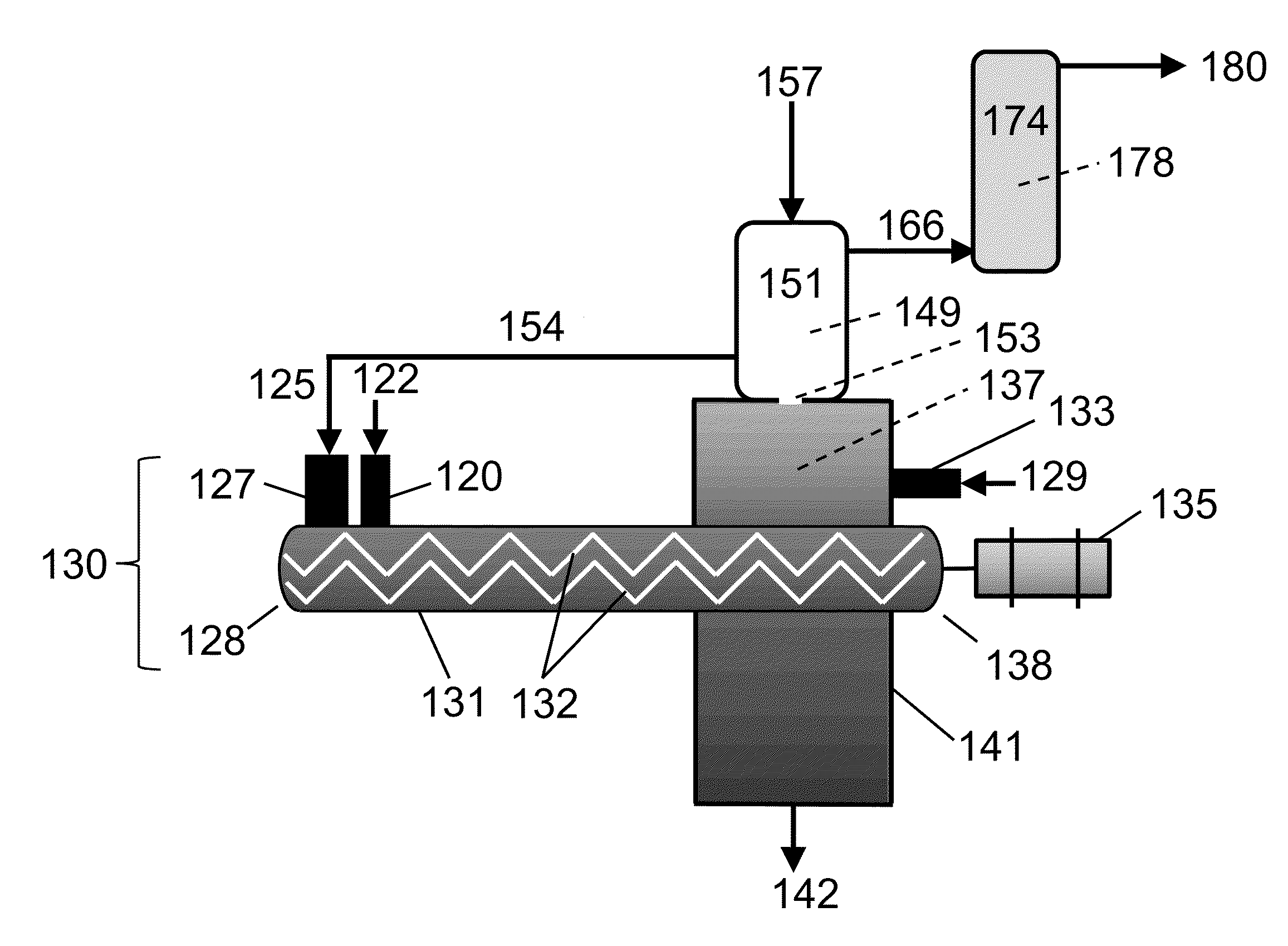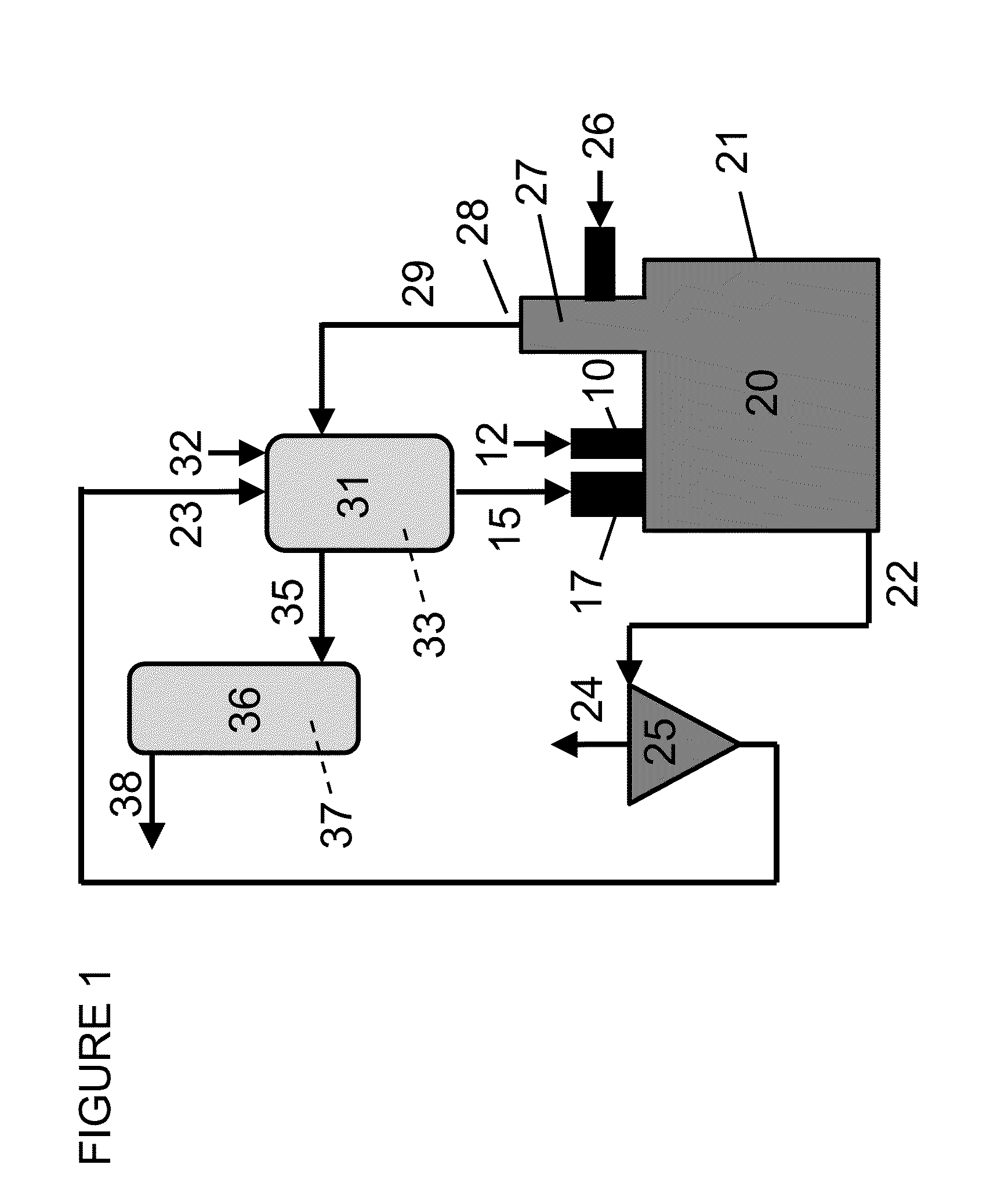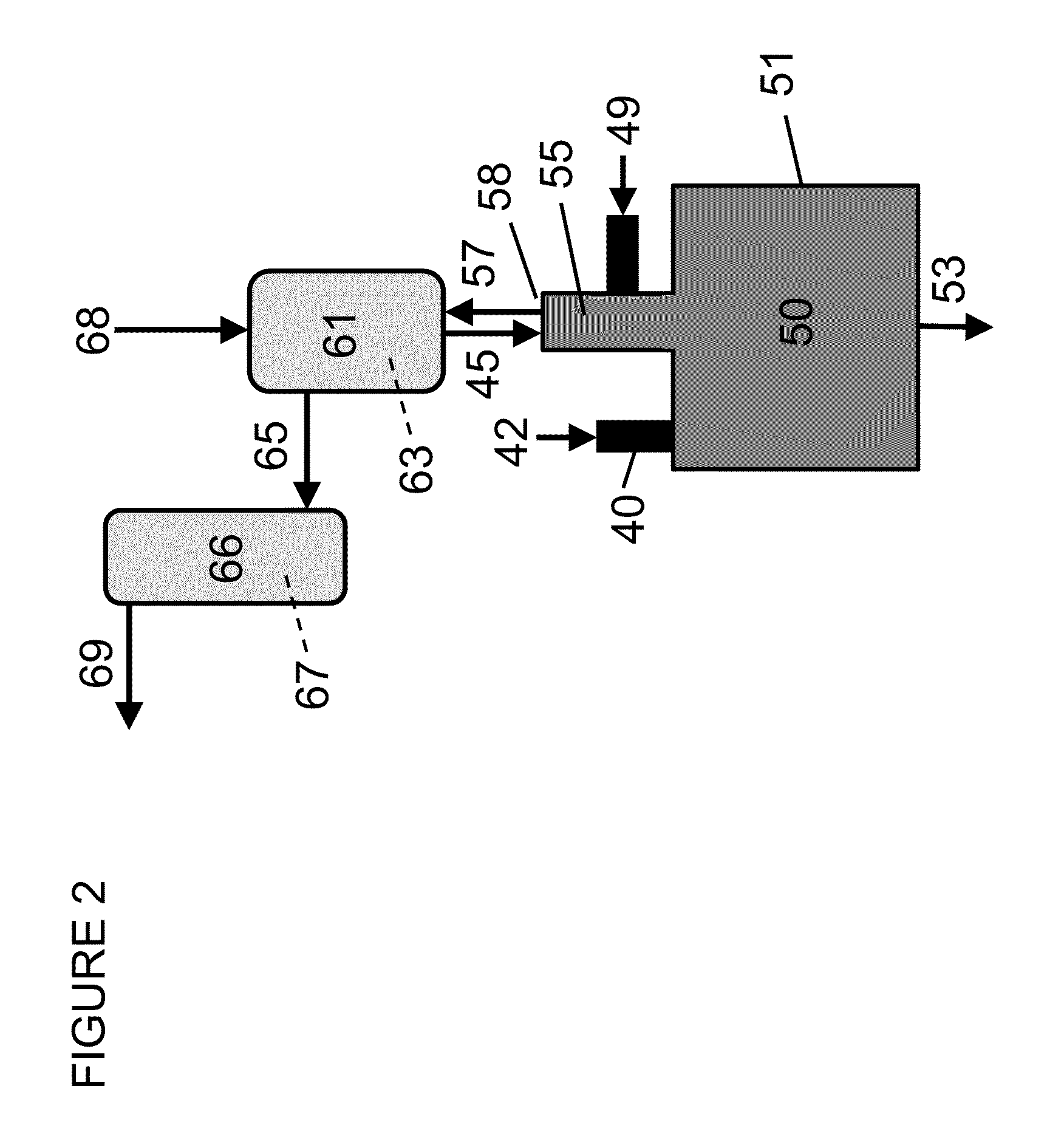Pyrolysis vapor rapid filtration and conversion to fuel
- Summary
- Abstract
- Description
- Claims
- Application Information
AI Technical Summary
Benefits of technology
Problems solved by technology
Method used
Image
Examples
Embodiment Construction
[0014]Pyrolysis vapors are known to be highly reactive, and can rapidly form high molecular weight compounds that are above the boiling-point range of typical hydrocarbon transportation fuels (i.e., a carbon number greater than about 35). Examples of typical addition reactions between compounds typically found in pyrolysis vapors are shown in Schemes 1-3 below:
Scheme 1: Reaction of Propionaldehyde (C3) and Methyl Furan (C5) to Form a C11 Molecule.
[0015]
Scheme 2: Reaction of Propylene (C3-) and a Vinyl Cresol (C9) to Form a C12 Molecule.
[0016]
Scheme 3: Reaction of a Vinyl Cresol (C9) and a Dimethoxy Vinyl Phenol (C10) to Form a C19 Molecule.
[0017]
[0018]The methods and systems described herein allow rapid filtration / removal of solid char particles from raw pyrolysis vapors by immediately directing the vapors through a moving bed granular filter (MBGF) comprising a heated heat carrier as the granular filter material. The heated heat carrier slowly passes through the MBGF and is conveye...
PUM
| Property | Measurement | Unit |
|---|---|---|
| Temperature | aaaaa | aaaaa |
| Temperature | aaaaa | aaaaa |
| Flow rate | aaaaa | aaaaa |
Abstract
Description
Claims
Application Information
 Login to View More
Login to View More - R&D
- Intellectual Property
- Life Sciences
- Materials
- Tech Scout
- Unparalleled Data Quality
- Higher Quality Content
- 60% Fewer Hallucinations
Browse by: Latest US Patents, China's latest patents, Technical Efficacy Thesaurus, Application Domain, Technology Topic, Popular Technical Reports.
© 2025 PatSnap. All rights reserved.Legal|Privacy policy|Modern Slavery Act Transparency Statement|Sitemap|About US| Contact US: help@patsnap.com



